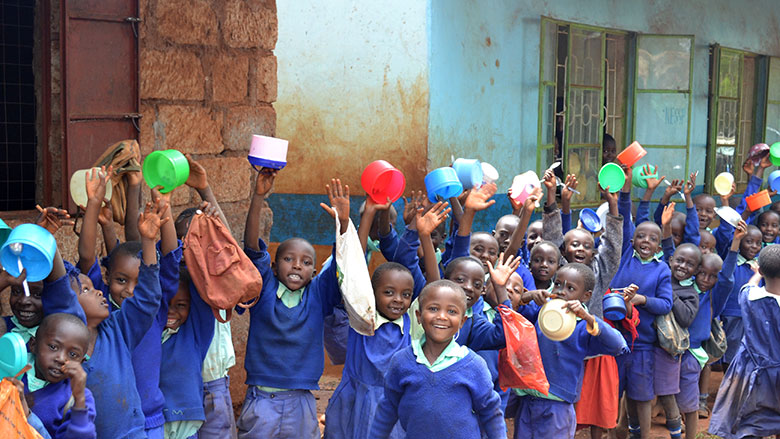
In accordance with the UN Millennium Development Goals (MDGs) on hunger, poverty, and malnutrition, the Ghana School Feeding Programme (GSFP), which was launched in 2005, is an endeavour of the Comprehensive Africa Agricultural Development Programme (CAADP) Pillar 3, which aims to improve food security and reduce hunger.The GSFP’s core goals are to: Increase school enrollment, attendance, and retention, lower kindergarten and primary school students’ short-term hunger and malnutrition, Increase domestic food production, decrease in poverty and increase the security of food. Additionally, the programme was designed to serve Ghana’s local farmers as well as all public primary schools and kindergartens.
The programme’s goal is to feed 1.69 million children in Ghana.Over the past ten years, school feeding schemes have become more and more popular in several low- and middle-income nations, including Ghana. However, recent changes to the domestic and international economic landscapes have highlighted major weaknesses in the viability of such schemes. We outline the Ghana School Feeding Programme’s (GSFP) present financial obstacles and prospects and argue that proof is essential to guaranteeing the programme’s long-term viability.Schools are chosen for the GSFP based on a range of socioeconomic, educational, and geographic criteria, including the community’s level of poverty, food insecurity, and hunger, as well as the enrollment rate of the school, particularly for girls. According to the analysis conducted at the school level, the GSFP primarily targets areas with high rates of poverty. Private caterers are the main programme implementers; they are given contracts to purchase, prepare, and serve food to students in particular schools.A portion of the recipients think the school lunches are either not sufficiently nutritious or do not live up to the recommended standards. However, given that there isn’t enough food to begin with, which is a more fundamental and significant issue as reported by all GSFP stakeholders, the nutritional value of school meals may have to wait for the time being. The only thing regulated by the Ghana National School Feeding Policy is the amount of money given to caterers per meal, which was recently raised from 0.97 Ghana Cedi to 1.2 Ghana Cedi (or about 0.1 USD).
The School Feeding Secretariat at the district level sets menus within this per-meal allotment to guarantee that children receive at least thirty percent of their daily nutritional needs in the form of one hot meal. While almost all caterers claim to follow the menu provided by the school feeding secretariat several days a week or every day of the typical week, several headteachers claim that caterers deviate from the menu on multiple occasions a week or every day that is provided to them by the district-level school feeding secretariat. Why is there so little food, and why are there so many menu items that don’t meet government requirements? Caterers claim that they have reduced food quantities to offset rising costs. According to head teachers, caterers have to rely on their own resources to cover missed payments. Given that a significant portion of caterers also run other small businesses, it is possible that they will need to use the money from these ventures to address cash flow issues in their school feeding operations.Other than what is regarded as insufficient and irregular feeding grants, it seems that the government is not providing much assistance at this time.
SCHOOL HEALTH EDUCATION PROGRAMME (SHEP) coordinators stated that, although caterers identified finance or cash flow as the biggest constraint, the district offers no assistance in facilitating access to financing. Likewise, SHEP coordinators stated that, caterers receive assistance and advice regarding procurement from the local government—generally a nice gesture but essentially unimportant. Notwithstanding substantial macro-fiscal headwinds, the GSFP remains an essential instrument for preventing hunger in schools. However, GSFP does not have a strong oversight and accountability system in place, nor does it receive sufficient backing from the government. The government may not have had the power to compel accountability if it had not been able to fulfil its end of the agreement by providing sufficient and timely funding for the programme. Resolving inefficiencies and potential inequities could strengthen the programme, in addition to increasing funding to the extent that the budget permits.
Headteachers attested to the fact that suitable standards were applied when choosing schools; however, more data is required to determine the degree of inclusion and exclusion errors in targeting. Furthermore, it is imperative to enhance the functioning ecosystem through private sector development programmes aimed at pertinent service providers throughout the school feeding value chain. The programme has a great deal of potential to benefit Ghana’s low-income households, but its future is uncertain unless these adjustments are made.

